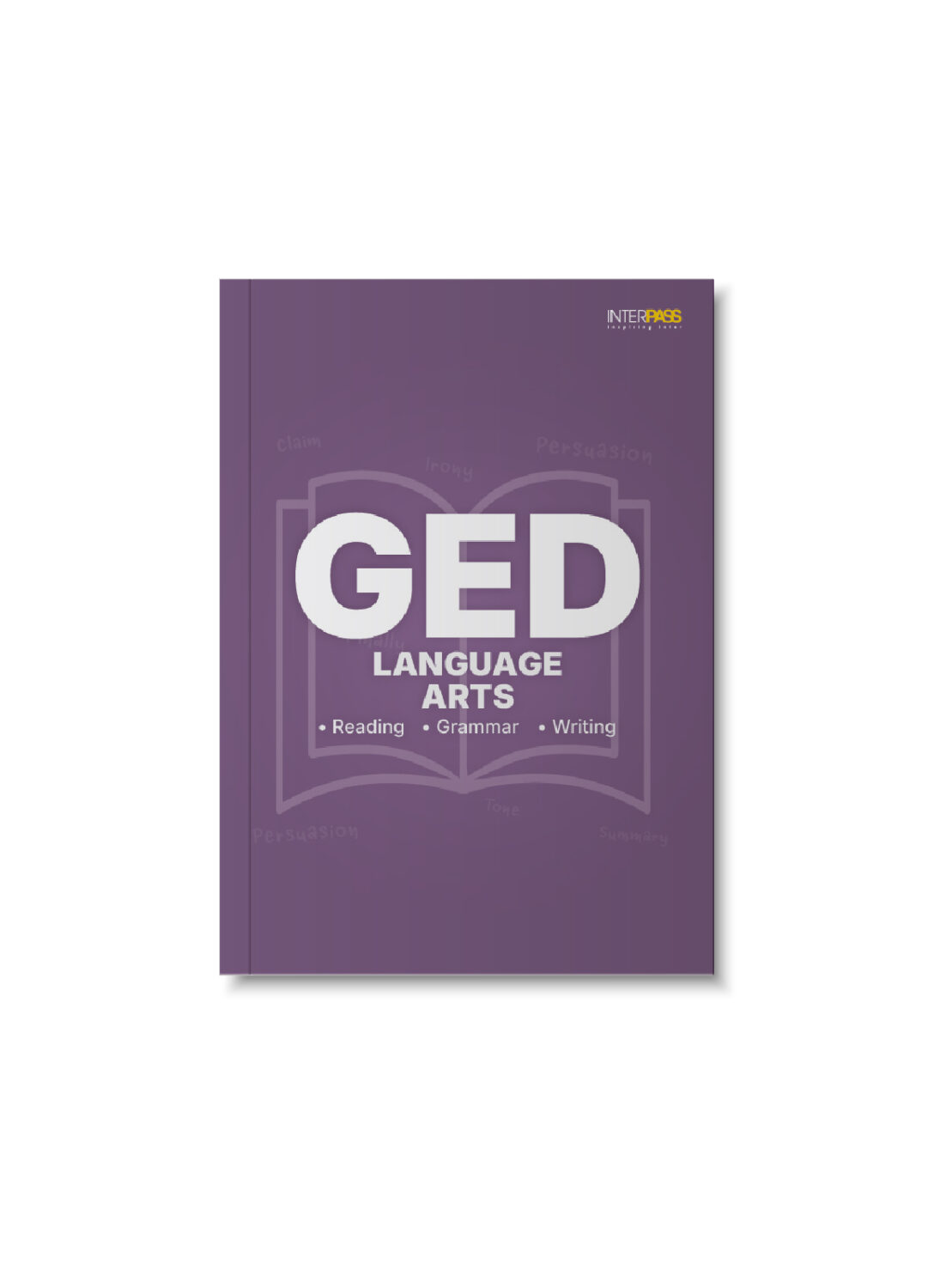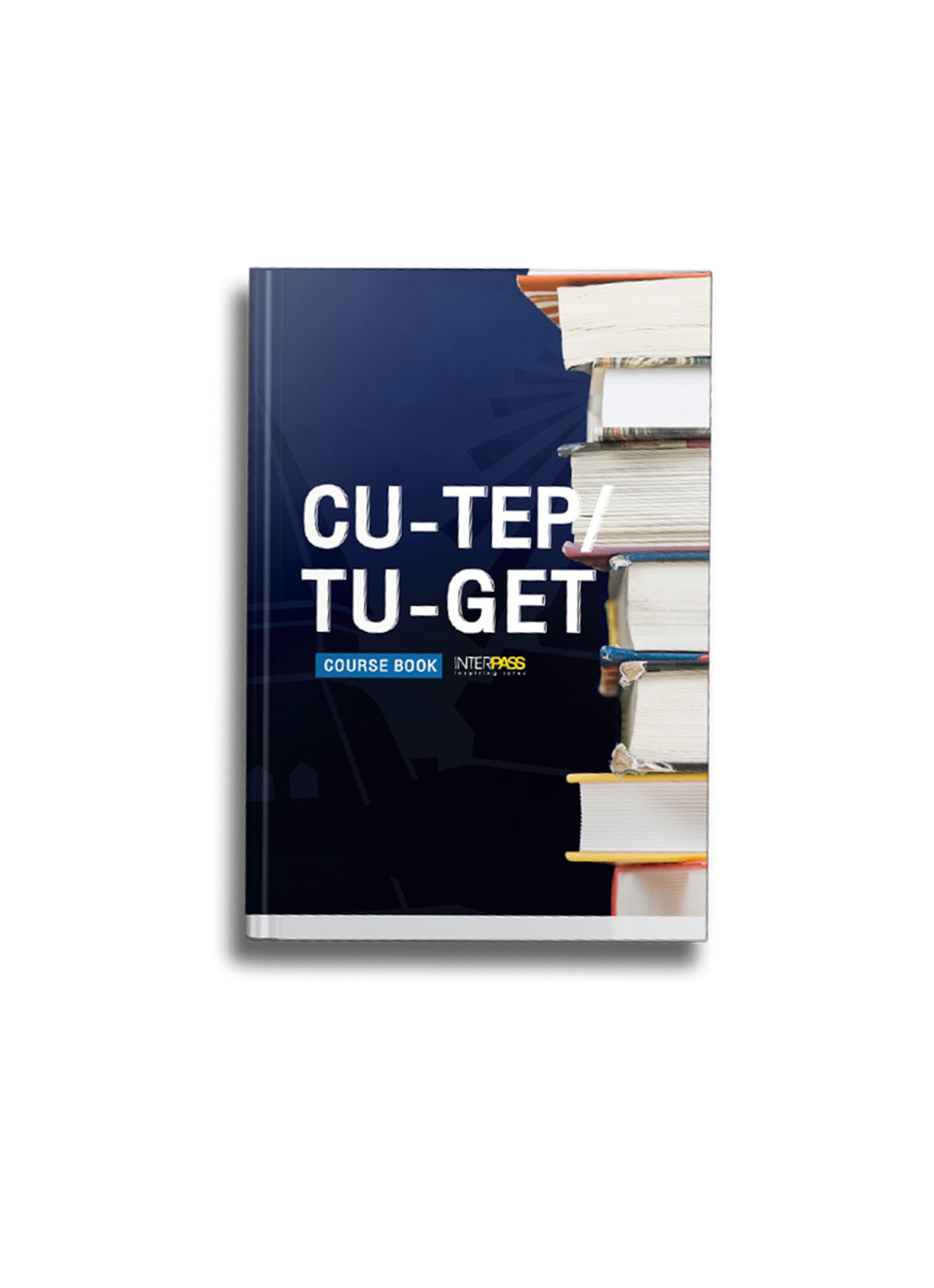การสอบ GED Reading มักถูกเปรียบเทียบกับ IELTS Reading เพราะทั้งคู่ต้องใช้ทักษะการอ่านจับใจความและวิเคราะห์บทความ แต่ความยาก ความยาว และประเภทคำถามต่างกันมาก น้อง ๆ หลายคนอาจสงสัยว่า GED Reading ยากพอ ๆ กับ IELTS จริงหรือไม่ และถ้าอยากสอบผ่าน ต้องฝึกยังไงบ้าง? บทความนี้เราจะพาไปดูความแตกต่าง ระดับความยาก ตัวอย่างข้อสอบ และแนะนำที่เรียน GED ที่ไหนดี
GED Reading vs IELTS Reading ต่างกันยังไง?
GED Reading
- เนื้อหาหลัก: General Reading, Social Studies, Science, Literature
- ข้อสอบ: Multiple Choice 100%
- ทักษะที่วัด: จับใจความ, หาหลักฐานใน passage, reasoning skills
- ศัพท์: ไม่ยากเท่า IELTS แต่โจทย์เน้นคิดวิเคราะห์
IELTS Reading
- เนื้อหาหลัก: ในการสอบแบบ Academic ข้อสอบที่ใช้ดัดแปลงมาจากแหล่งข้อมูลทางวิชาการ ไม่ว่าจะเป็นหนังสือเรียนมหาวิทยาลัย วารสารวิชาการ หรือบทความเชิงวิจัยที่ตีพิมพ์ในสาขาต่าง ๆ มักมีความยาวมากและใช้ภาษาเชิงวิชาการที่ค่อนข้างซับซ้อน
- ข้อสอบ: คำถามหลายรูปแบบ เช่น Matching Headings, True/False/Not Given, Sentence Completion
- ศัพท์: ยากและเชิงวิชาการ
- เวลา: 60 นาที ต้องอ่านเร็วมาก
ตัวอย่างข้อสอบ GED Reading
Passage: Life on the River
The sun had just risen above the dense forest, spreading light across the wide, slow-moving river. Elena sat in the canoe, watching as the morning mist rose from the water and drifted into the treetops. Her guide, Tomas, paddled silently, his movements steady and effortless, as if he had been born with an oar in his hand.
“Do you always travel this early?” Elena asked quietly, not wanting to break the calm.
Tomas nodded. “The river is safest before the heat comes. Later, the winds pick up, and the animals grow restless.”
Elena leaned over the side of the canoe and trailed her fingers through the cool water. Tiny silver fish darted away, creating ripples that disappeared into the current. She glanced toward the forest edge, where a family of monkeys was swinging through the branches, their chatter echoing across the water.
For hours, they drifted without speaking, the silence broken only by the dip of Tomas’s paddle. Elena tried to stay patient, but her curiosity burned. She had come to the rainforest to study its rare birds, not to float quietly along the river. Finally, she said, “Shouldn’t we be searching for the parrots by now?”
“You are searching,” Tomas replied without turning his head. “But not with your eyes only. To find them, you must listen.”
Elena frowned, but she obeyed. She closed her eyes, letting the sounds wash over her: the hum of insects, the croak of frogs, the distant rush of water against rocks. At first, it was overwhelming, but slowly she began to pick out patterns. There was the tapping of a woodpecker, sharp and insistent. There was the flapping of wings overhead—small birds darting through the canopy. And then, faint but clear, came the squawk of parrots in the distance.
Her eyes shot open. “There! I heard them!”
Tomas finally smiled. “Now you understand. The forest speaks first. If you are impatient, you will never hear it.”
Elena realized then that this journey was not just about spotting animals. It was about learning patience, discipline, and respect for the world around her. The rainforest was alive, but it would only reveal itself to those willing to listen.
Questions
1. Which quotation from the passage best supports the idea that Tomas is teaching Elena to be patient?
A. “The river is safest before the heat comes.”
B. “You are searching,” Tomas replied without turning his head. “But not with your eyes only.”
C. “Her eyes shot open. ‘There! I heard them!’”
D. “Tiny silver fish darted away, creating ripples that disappeared into the current.”
2. What can the reader infer about Elena at the beginning of the journey?
A. She is frustrated by the slow pace of the trip.
B. She has deep experience studying rainforest animals.
C. She feels nervous about the dangers of the river.
D. She prefers silence over conversation.
3. Which definition best matches the use of the word “patterns” in paragraph 8?
A. Repeated arrangements of colors or designs
B. Regular and predictable sequences in sounds
C. The decorative markings of birds’ feathers
D. Instructions or models used for copying
เฉลย Passage: Life on the River
ข้อ 1. คำตอบที่ถูก: B
- เหตุผล:
- A พูดถึงความปลอดภัยของแม่น้ำ ไม่ได้เกี่ยวกับการสอนความอดทน
- B ชี้ตรง ๆ ว่า Tomas กำลังสอน Elena ว่าการค้นหาไม่ใช่แค่ใช้ “ตา” แต่ต้อง “ฟัง” และรอคอย → แก่นของการฝึก patience
- C แค่บรรยายผลลัพธ์ที่ Elena ได้ยินนก แต่ไม่ได้สะท้อนการสอนของ Tomas
- D เป็นรายละเอียดบรรยายภาพธรรมชาติ ไม่เกี่ยวกับการสอน
- A พูดถึงความปลอดภัยของแม่น้ำ ไม่ได้เกี่ยวกับการสอนความอดทน
ดังนั้น B เป็นหลักฐานชัดที่สุดที่ Tomas สอนเรื่องความอดทน
ข้อ 2. คำตอบที่ถูก: A
- เหตุผล:
- ตอนต้น Elena แสดงความ “อยากให้เริ่มหานกแก้วเร็ว ๆ” → แสดงความไม่พอใจที่ต้องลอยเรือเงียบ ๆ นาน (“She tried to stay patient, but her curiosity burned.”)
- B ผิด เพราะ passage บอกว่าเธอมาศึกษานกหายาก แต่ไม่ได้แสดงว่าเธอมีประสบการณ์เยอะ
- C ไม่ถูก เพราะเธอไม่ได้กลัวอันตรายของแม่น้ำ กลับเอานิ้วแตะน้ำอย่างสบายใจ
- D ไม่ถูก เพราะจริง ๆ เธอ “ทนไม่ไหว ต้องถาม” → แสดงว่าเธอไม่ชอบความเงียบมากนัก
- ตอนต้น Elena แสดงความ “อยากให้เริ่มหานกแก้วเร็ว ๆ” → แสดงความไม่พอใจที่ต้องลอยเรือเงียบ ๆ นาน (“She tried to stay patient, but her curiosity burned.”)
ดังนั้น inference ที่ตรงที่สุดคือ Elena รู้สึกหงุดหงิดกับความช้า (A)
ข้อ 3. คำตอบที่ถูก: B
- เหตุผล:
- ในบริบท Elena กำลัง “ฟังเสียงในป่า” → patterns = รูปแบบที่ซ้ำ ๆ ของเสียง เช่น tapping, flapping
- A พูดถึงลาย/ดีไซน์ (ไม่เกี่ยวกับเสียง)
- C เกี่ยวกับลวดลายขนนก (ผิด context)
- D คือความหมาย “แบบแผนที่ใช้ทำซ้ำ” → ไม่เข้ากับข้อความ
- B ตรงที่สุด เพราะหมายถึง “รูปแบบที่เป็นจังหวะ/ซ้ำของเสียง”
- ในบริบท Elena กำลัง “ฟังเสียงในป่า” → patterns = รูปแบบที่ซ้ำ ๆ ของเสียง เช่น tapping, flapping
Passage: Excerpt from The Secret Garden
Mary Lennox had never been considered a pleasant child. She was thin and sallow, with a sharp little face and a sour expression. When her parents died suddenly in India, she was sent to live with her uncle in a great, gloomy house in England.
The house seemed even bigger and lonelier than she had imagined. The servants treated her politely but without affection, and her uncle was almost never at home. Left mostly to herself, Mary grew restless. One rainy afternoon she wandered down a long corridor and came upon a locked door.
“What’s in there?” she asked the maid who was dusting nearby.
“Nothing you need to worry about, miss,” the maid replied quickly. “Best keep away.”
Mary’s curiosity only deepened. She spent days exploring the gardens outside, convinced that the locked door must lead to something mysterious. Finally, an old gardener mentioned a garden that had been locked up for ten years.
Mary’s heart raced. A hidden garden! She determined that she would find the key and discover what lay behind the door, no matter how long it took.
Questions
1. Arrange the events in the order in which they occur in the passage.
Events:
- Mary arrives at her uncle’s gloomy house in England.
- Mary hears about a locked door in the house.
- Mary learns of a secret garden that has been closed for ten years.
- Mary wanders restlessly through the corridors on a rainy day.
2. Which word describes Mary and should be placed in the character web?
Options:
- Curious
- Lonely
- Pleasant
- Determined
- Cheerful
- Restless
เฉลย
ข้อ 1: Sequence of Events
- Mary arrives at her uncle’s gloomy house in England.
- Mary wanders restlessly through the corridors on a rainy day.
- Mary hears about a locked door in the house.
- Mary learns of a secret garden that has been closed for ten years.
ข้อ 2: Character Web (Mary)
- Curious → เธอถามถึงห้องที่ถูกล็อก และอยากรู้ความลับ
- Lonely → ไม่มีใครสนิท บ้านใหญ่และวังเวง
- Restless → เบื่อ ต้องเดินสำรวจไปทั่ว
- Determined → มุ่งมั่นว่าจะหากุญแจและเข้าไปในสวนให้ได้
(❌ Pleasant, ❌ Cheerful → ไม่ใช่ลักษณะของ Mary ในบทนี้)
Passage: Understanding Daylight Saving Time
Twice every year, Americans adjust their clocks to follow Daylight Saving Time (DST). In the spring, clocks are set forward by one hour, and in the fall, they are set back by one hour. The goal is to make better use of daylight. DST was first introduced in the United States in 1918 to conserve resources during World War I, though the concept had been suggested much earlier. For example, Benjamin Franklin proposed a similar idea to the citizens of France in 1784 to save candles by taking advantage of sunlight.
DST Across America
After its introduction, cities had the option to observe DST or not. By the 1960s, this freedom led to a patchwork of different local times, causing confusion for travel, transportation, and even entertainment schedules. To solve this problem, Congress passed the Uniform Time Act of 1966, establishing official start and end dates for DST. However, participation remained optional for each state. Even today, some areas, like Hawaii and parts of Arizona, do not observe DST.
Benefits of DST
Supporters of DST argue that it saves energy. Research from the 1970s found that DST reduced electricity use by about 1% per day, since more daylight in the evening reduced the need for artificial lighting. Additionally, extended daylight is said to improve safety. Studies show that pedestrian accidents decrease by 8–11% and vehicle occupant crashes drop by 6–10% after the spring shift. DST may also reduce crime because people can complete their outdoor activities in daylight rather than after dark.
Arguments Against DST
Critics, however, question these benefits. A 2007 study in California found minimal impact on energy consumption. Research in Indiana showed that residents spent $8.6 million more annually on electricity after adopting DST, partly due to increased air conditioning use. Safety is also a concern: studies indicate more pedestrian fatalities immediately following clock changes, suggesting the abrupt one-hour shift can create dangerous adjustment periods for drivers and walkers alike. Moreover, the confusion caused by people forgetting to change their clocks can outweigh any potential gains from DST.
Conclusion
While DST aims to conserve energy and improve safety, its benefits remain debated. Supporters cite reduced electricity use, fewer accidents, and lower crime rates. Opponents highlight increased energy costs, safety risks, and confusion from abrupt time changes. The effectiveness of DST depends heavily on local circumstances, making it a complex issue with valid arguments on both sides.
Question:
In your response, analyze both positions presented in the passage to determine which one is best supported. Use specific evidence from the passage to justify your answer.
Instructions:
- Identify the arguments from both supporters and critics of DST.
- Evaluate the evidence provided for each position.
- Decide which argument is more convincing based on the passage.
- Use at least three pieces of specific evidence from the text to support your analysis.
- Write your response in complete sentences. You may spend up to 45 minutes planning, drafting, and editing your answer.
ตัวอย่างคำตอบเชิงวิเคราะห์ (Detailed Answer Key)
- Supporters’ Arguments:
- DST saves electricity: “Research from the 1970s found that DST reduced electricity use by about 1% per day.”
- Safety benefits: “Pedestrian accidents decrease by 8–11% and vehicle occupant crashes drop by 6–10% after the spring shift.”
- Reduces crime: “DST may also reduce crime because people can complete their outdoor activities in daylight rather than after dark.”
- DST saves electricity: “Research from the 1970s found that DST reduced electricity use by about 1% per day.”
- Critics’ Arguments:
- Energy cost increase in some areas: “Research in Indiana showed that residents spent $8.6 million more annually on electricity after adopting DST.”
- Safety concerns: “Studies indicate more pedestrian fatalities immediately following clock changes.”
- Confusion from abrupt shifts: “The confusion caused by people forgetting to change their clocks can outweigh any potential gains from DST.”
- Energy cost increase in some areas: “Research in Indiana showed that residents spent $8.6 million more annually on electricity after adopting DST.”
- Evaluation & Conclusion:
- While supporters provide historical data showing energy savings and reduced accidents, critics offer evidence that in some states DST increases energy costs and creates immediate safety risks.
- Based on the passage, the critics’ concerns are more directly supported with specific numerical evidence (e.g., $8.6 million extra, pedestrian fatalities) and highlight real-world consequences.
- Therefore, the argument against DST is slightly better supported by concrete evidence in the passage, though the supporters’ claims are also valid.
- While supporters provide historical data showing energy savings and reduced accidents, critics offer evidence that in some states DST increases energy costs and creates immediate safety risks.
ตัวอย่างคำตอบแบบสั้น ๆ
Supporters of DST argue that it saves energy, reduces accidents, and lowers crime. Critics, however, claim it can increase energy costs in some states and cause more pedestrian fatalities immediately after clock changes. The passage provides concrete numbers, like $8.6 million extra spent on electricity in Indiana and pedestrian deaths rising after the fall shift, which make the critics’ argument more convincing. Therefore, the passage best supports the position of DST opponents.
แล้วควรเลือกเรียน GED ที่ไหนดี?
เมื่อมาถึงขั้นตอนตัดสินใจเลือกที่เรียน GED น้อง ๆ หลายคนอาจสงสัยว่า ควรเลือกสถาบันไหนดีถึงจะคุ้มค่าและช่วยสอบผ่านได้จริง? หลักการเลือกที่เรียน GED ที่ควรพิจารณามีดังนี้
- ดูว่าสอนครบทั้ง 4 วิชา (RLA, Math, Science, Social Studies)
- มี Mock Test ให้ลองทำเพื่อประเมินความพร้อม
- เช็กสถิติสอบผ่านของรุ่นพี่ ๆ ว่าเปอร์เซ็นต์สูงไหม
- เลือกเรียน Online หรือ Onsite ให้เหมาะกับสไตล์ของตัวเอง
เรียน GED ที่ไหนดี?
แนะนำ Interpass – สถาบันติว GED ออนไลน์ & On-site ที่รุ่นพี่แนะนำ
ถ้าน้อง ๆ กำลังมองหาที่ ติว GED แบบครบวงจร ทั้งเรียนสดออนไลน์ เรียน Onsite และมีระบบดูแลรายบุคคล ต้องบอกเลยว่า Interpass เป็นตัวเลือกที่รุ่นพี่เลือกเรียนและสอบผ่านจริงมาแล้วหลายรุ่น
GED FAST TRACK
ตัวช่วยเร่งรัดการเตรียมสอบ GED ภายใน 1 ปี ครบทั้ง 4 วิชา รวมกว่า 120 ชั่วโมง เนื้อหาคัดสรรให้ตรงกับข้อสอบจริง พร้อมระบบดูแลตลอดคอร์ส
- อายุคอร์ส 1 ปี
- ครอบคลุมทุกวิชา (RLA, Math, Science, Social Studies)
- มีทั้งสอนสดและออนไลน์ย้อนหลัง
กิจกรรมอัพคะแนน TEST BANK
คลังข้อสอบ GED ที่คัดมาหลายพันข้อ ให้น้อง ๆ ฝึกทำโจทย์เหมือนสอบจริง
ข้อสอบ GED READY
Interpass มีข้อสอบ GED Ready ให้ครบทุกวิชา — รวมกว่า 28 ชุด เพื่อให้น้อง ๆ ได้ประเมินคะแนนก่อนสอบจริง
แพลนการเรียน GED PLANNER
สิ่งที่ทำให้ Interpass แตกต่าง คือ GED PLANNER ที่จะช่วยให้น้อง ๆ วางแผนการเรียนและการสอบได้อย่างเป็นระบบ
- วางแผนเส้นทางการเรียนแบบรายบุคคล
- ปรับให้เหมาะกับพื้นฐาน (ไม่ว่าจะมาจากไทย อินเตอร์ หรือโฮมสคูล)
- มีโค้ชช่วยดูแลทั้งเรื่องเรียนและการสมัครสอบ GED









